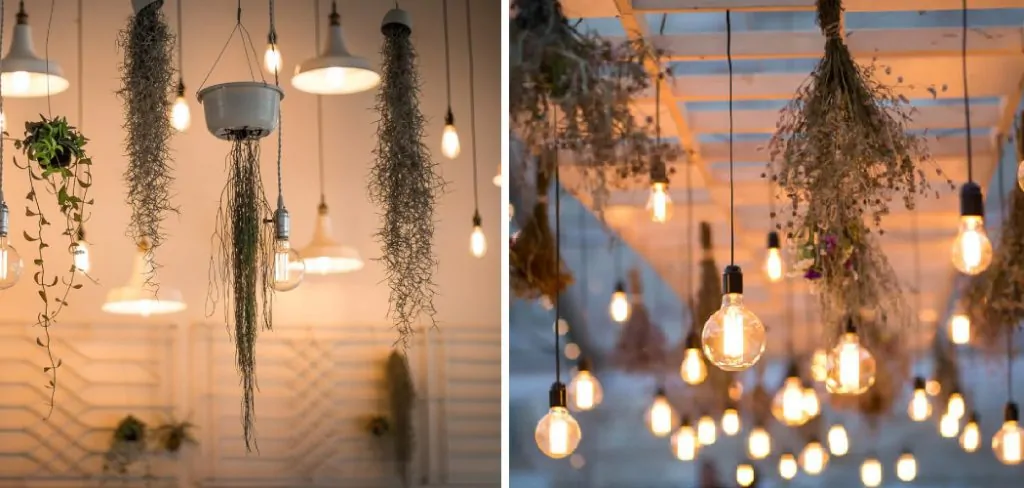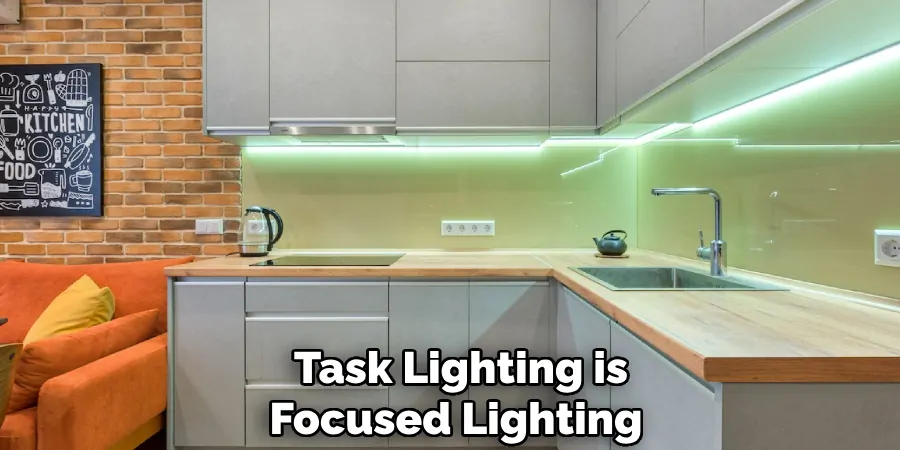Layering lighting is a design technique that involves combining multiple light sources to create depth and mood in a space. It can completely transform the look and feel of a room, making it more inviting, functional, and visually appealing. From creating ambiance to highlighting specific areas or objects, layering lighting offers endless possibilities for designing the perfect atmosphere.

Layering lighting is a popular technique used in interior design to enhance the overall aesthetics and functionality of a space. It involves combining different types of lighting, such as ambient, task, and accent, to create a well-lit and inviting atmosphere.
This technique not only adds depth and dimension to a room but also allows for flexibility in terms of adjusting the brightness levels according to the needs and mood. You can find step-by-step instructions on how to layer lighting in this blog article.
Step-by-step Instructions for How to Layer Lighting
Step 1: Inspect the Room
Before we start layering lighting, it is important to take a good look at the room you want to illuminate. Note the existing sources of light and determine which areas need more or less light. This will help in deciding what type of lighting layers are needed.
Step 2: Start with Ambient Lighting
Ambient lighting is the base layer and provides overall illumination to the room. This can be achieved through ceiling fixtures, chandeliers, or recessed lights. Make sure the light is evenly distributed throughout the room and creates a warm and inviting atmosphere.
Step 3: Add Task Lighting
Task lighting is focused lighting that serves a specific purpose such as reading, cooking, or working at a desk. It should be placed directly above or near the task area to provide adequate lighting without causing shadows.

Step 4: Incorporate Accent Lighting
Accent lighting is used to highlight specific areas, objects, or architectural details in a room. This can be achieved through track lights, spotlights, or wall sconces. It adds depth and visual interest to the space. Natural light is a great addition to any room as it provides a sense of openness and freshness. Take advantage of natural light by placing furniture or reflective surfaces near windows to bounce the light around the room.
Step 5: Use Dimmers
Dimmers allow you to adjust the intensity of your lighting layers, creating different moods and ambiance in a room. This can also help save energy and extend the life of your light bulbs. To create a balanced and layered look, it is important to have lighting at different heights. This can be achieved through floor lamps, table lamps, or pendant lights. It adds dimension to the room and prevents a flat, dull look.
Step 6: Mix Different Light Sources
Instead of relying on just one type of lighting, mix and match different light sources to create a dynamic and layered effect. Use a combination of ambient, task, accent, and natural lighting to achieve the desired look.
When layering lighting, it is important to consider the color temperature of your light bulbs. Choose warm white or soft white bulbs for a cozy and inviting atmosphere, or cool white bulbs for a more modern and energizing feel.
Step 7: Experiment
Layering lighting is an art, not a science. Don’t be afraid to experiment with different combinations and placements of lights until you find the perfect balance. Remember, it’s all about creating a functional and visually appealing space that suits your needs and personal style.
Safety Precautions for How to Layer Lighting
- When installing new light fixtures, always make sure to turn off the power at the circuit breaker before starting any work.
- Use caution when climbing ladders or stools to reach high areas for lighting installation.
- Make sure all light bulbs are compatible with your fixtures and do not exceed the recommended wattage.
- Keep flammable materials such as curtains or paper away from light sources to prevent fire hazards.
- Use proper extension cords and make sure not to overload them.
- Regularly check for any loose or damaged wiring and replace as needed.
- If you are unsure about the electrical work involved in layering lighting, it is always best to consult a professional electrician. Safety should be the top priority when working with electricity.

By following these safety precautions, you can ensure a smooth and accident-free process while layering lighting in your home. Remember to always prioritize safety over style.
What Are Some Common Mistakes to Avoid When Layering Lighting?
Layering lighting is a crucial element of interior design, and when done correctly, it can completely transform the look and feel of a room. However, as with any design technique, there are some common mistakes that people make when layering lighting. In this section, we will discuss these mistakes and how to avoid them.
1. Not Considering the Function of the Room
One of the biggest mistakes people make when layering lighting is not considering the function of the room. Each room in your home has a different purpose and therefore requires a different type of lighting. For example, the lighting needs in a bedroom will be vastly different from those in a kitchen or living room. Therefore, it is essential to think about how you will be using the room and what type of lighting is required before layering.
2. Using Only One Source of Light
Another common mistake people make when layering lighting is relying on only one source of light. This can create an unbalanced and harsh look in the room. It is essential to use a combination of ambient, task, and accent lighting to create depth and dimension in the space. Ambient lighting provides overall illumination, task lighting is for specific tasks such as reading or cooking, and accent lighting highlights specific areas or objects in the room.
3. Neglecting to Create Different Levels of Light
Layering lighting is all about creating depth and dimension in a space. To achieve this, it is crucial to create different levels of light within the room. This can be achieved by using a combination of overhead lighting, wall sconces, table lamps, and floor lamps. This not only adds visual interest to the room but also allows for more control over the intensity of light.
4. Forgetting about Aesthetics
While functionality is essential, it is also crucial to consider the aesthetic appeal of your lighting choices. Many people make the mistake of choosing lighting fixtures that do not match the overall style of the room. For example, a modern pendant light may look out of place in a traditional or rustic-style living room. It is important to select lighting that complements the decor and adds to the overall aesthetic.

5. Not Utilizing Natural Light
Lastly, natural light is often overlooked when layering lighting. Natural light not only provides a beautiful and soft glow to the room but also helps save energy costs. Make sure to incorporate natural light into your lighting design by using sheer curtains or blinds that allow sunlight to filter through.
How Can You Achieve a Balanced and Cohesive Look Using Layered Lighting?
Layered lighting is a popular technique used by interior designers and homeowners alike to achieve a balanced and cohesive look in a space. It involves the use of multiple sources of light at different levels, creating depth and dimension in a room. By layering lighting, you can create different moods and ambience, as well as highlight specific areas or objects in a room.
1. Start with Ambient Lighting
Ambient lighting serves as the base layer of your layered lighting design. It provides overall illumination to the room and sets the tone for the space. This can be achieved through ceiling or wall-mounted fixtures, such as chandeliers, recessed lights, or track lighting. It is important to choose the right level of brightness for your ambient lighting, as it will affect how other layers of light are perceived in the room.
2. Add Task Lighting
Task lighting serves a specific purpose, such as reading, cooking, or working at a desk. This layer should be added on top of your ambient lighting to provide focused, task-specific illumination. Popular examples of task lighting include table lamps, floor lamps, and under-cabinet lights.
3. Include Accent Lighting
Accent lighting is used to draw attention to specific areas or objects in a room. This layer adds depth and dimension by highlighting artwork, architectural features, or decorative elements. Wall sconces, picture lights, and track lighting are commonly used for accent lighting.
4. Consider Decorative Lighting
Decorative lighting serves both a functional and aesthetic purpose in layered lighting design. It can serve as a focal point in the room while also providing additional light. Decorative fixtures, such as pendant lights or statement chandeliers, can add personality and style to a space.

Conclusion
In conclusion, layering lighting in your home is the key to creating a warm and inviting atmosphere. By using different sources of light, you can create depth and dimension in a room, making it feel more spacious and visually appealing. One important factor to keep in mind when layering lighting is to consider the function of each space. For example, task lighting is essential in areas where specific activities take place, such as a desk or kitchen counter.
Ambient lighting is best for general illumination and can be achieved through overhead lights or wall sconces. Furthermore, don’t be afraid to mix lighting styles and types. Combining different fixtures like chandeliers, table lamps, and floor lamps can add interest and personality to a room. I hope this article has been beneficial for learning how to layer lighting. Make Sure the precautionary measures are followed chronologically.

